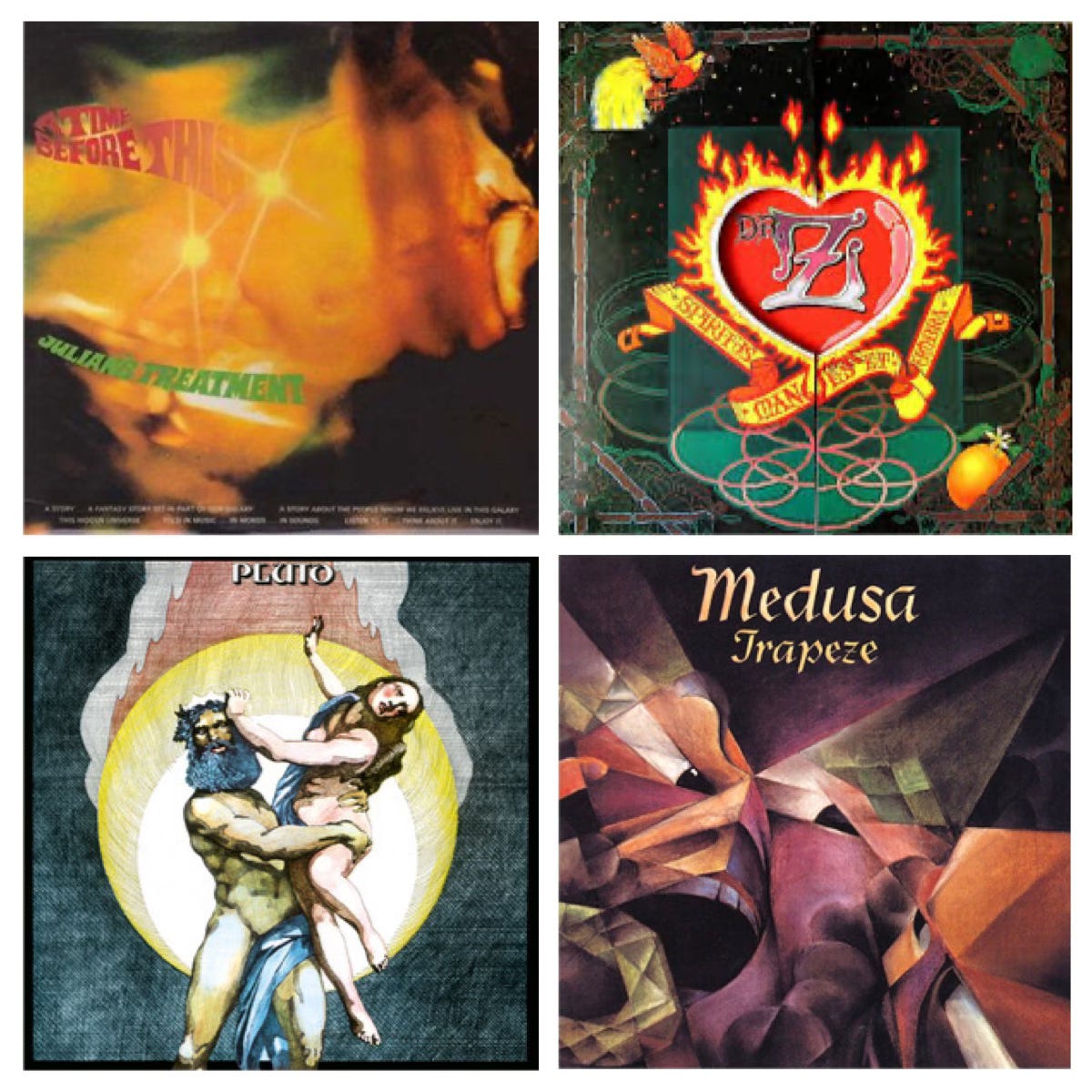Which 70s Deep Cut Deserves Its Moment?
A $1,000 concept album, extreme prog darkness on Vertigo, Glenn Hughes’ power trio peak, or Pluto’s lost hard rock gem. Vote now.
The DMO Union has spoken. These four wild 70s rock gems came straight from our Discord—submitted by folks who know their deep cuts and aren’t afraid to champion the weird, the heavy, and the overlooked. Now it’s time for you to decide which one gets the full podcast treatment.
Which album should we tear apart, celebrate, and obsess over on the next episode? Make your case, and vote.
Julian’s Treatment – A Time Before This (1970)
You might know Julian’s Treatment as that psychedelic concept album record collectors drop serious cash on—original copies have sold for over $1,000. But it’s not just hype. Fronted by sci-fi author and keyboardist Julian Jay Savarin, this double album is a Hammond organ–driven cosmic trip through interstellar war, galactic kingdoms, and beautiful blue alien women. The story follows the last man from Earth journeying to Alpha Centauri to join forces with Princess Altarra against the menacing Dark Lady Alda and the Mule. Singer Cathy Pruden shifts between fierce and ethereal as she embodies both characters, while Savarin’s organ work and Del Watkins’ fuzz guitar anchor this spacey proto-prog odyssey. It’s early UK progressive rock at its most ambitious and wonderfully strange—perfect for a dissection of how concept albums got born.
Dr. Z – Three Parts to My Soul (1971)
Dr. Z is one of those ultra-rare Vertigo Swirl label releases that prog collectors hunt like treasure. This is Keith Keyes’ vision—heavy Hammond organ and harpsichord matched by militaristic drums, almost no guitar, and vocals that howl with biblical intensity. The album title references Plato’s tripartite soul theory: Reason, Spirit, Appetite. Each track explores the stages of the soul leaving the body, blending dark classical structure with occult atmosphere and early King Crimson vibes. “Spiritus, Manes Et Umbra” sounds like a battalion of tanks rolling through a cathedral, while “In A Token Of Despair” builds a symphonic tour de force of Floydian winds and electrifying structure. This is extreme prog at its deepest and darkest—an album that demands close listening and rewards obsessive fans.
Pluto – Pluto (1971)
Pluto’s self-titled debut is a perfectly balanced blend of hard rock, progressive rock, and blues that somehow flew under the radar. Guitarists Paul Gardner and Alan Warner came from wildly different backgrounds—Gardner from North London’s psychedelic scene (he even recorded with Joe Meek), Warner from The Foundations. Together with bassist Mick Worth and drummer Derek Jervis, they crafted an album that mixes heads-down hard rock energy with progressive flourishes. Tracks like “Crossfire” and “Road to Glory” deliver meaty riffs and dual-guitar firepower, while songs like “And My Old Rocking Horse” showcase their songwriting depth. Released on the Dawn label in 1971, it became a sought-after collector’s item by the late ’80s. No filler, solid musicianship, and a sound that captures early ’70s hard rock before the genre splintered—this is ripe for rediscovery.
Trapeze – Medusa (1970)
You know Trapeze because Glenn Hughes—“The Voice of Rock”—sang and played bass before joining Deep Purple. You know them because guitarist Mel Galley later joined Whitesnake and drummer Dave Holland went to Judas Priest. But Medusa is where this power trio hit their peak. Recorded at Morgan Studios and produced by Moody Blues bassist John Lodge, this album channels Free’s funky grooves and soulful vocals with a heavier, more progressive edge. “Black Cloud” and “Touch My Life” deliver bluesy hard rock swagger, while the longer tracks—“Jury,” “Seafull,” and the title track—build from pastoral acoustic passages to spine-chilling climaxes that rival Uriah Heep and early Judas Priest. Hughes’ raw, powerful voice is jaw-dropping throughout, and Galley’s guitar work is tasteful yet fierce. This is an under appreciated hard rock masterpiece that deserves way more love.



